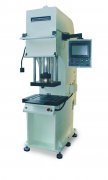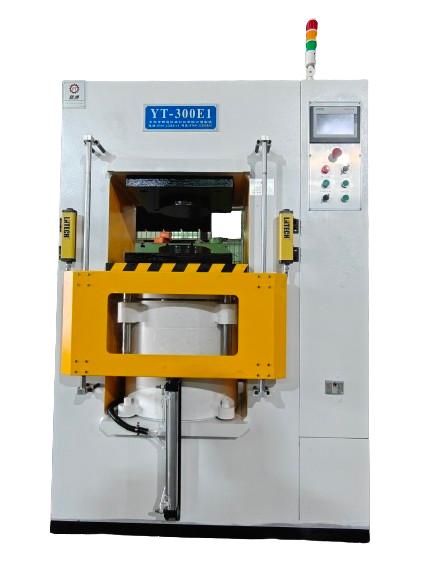How to Make a Hydraulic Briquette Press
time:2023-09-01 views:(点击 939 次)
Briquetting presses reduce the volume of loose production waste, making it suitable for storage, transport and further processing - saving on both warehouse space and disposal costs.
Grinding sludge, for instance, is an unwelcome by-product of metal processing that's hard to get rid of. But with the aid of a hydraulic briquette press, this waste can easily be turned into high-value briquettes that will serve their intended purpose in society.
Preparation of the materials
Preparing materials needed to build a hydraulic briquette press can dramatically lower energy consumption and help alleviate forest pressures while keeping waste material from decaying in landfills. Furthermore, briquettes produced through this process provide an alternative source of fuel such as coal or firewood and can even be made from recycled materials like newspapers or plant waste to make more dense burning briquettes that have greater burning capacities than raw wood.
A briquette press works by combining a mold with a hydraulic piston. This method of production requires only minimal amounts of raw material per briquette produced; typically made out of PVC pipe 40 cm long by 7.5 cm (3 in). Once screwed onto a flat piece of wood for support under pressure, water must escape via holes drilled around its perimeter for efficient functioning.
Once briquettes have been formed, they can be removed from their molds and cooled before storage or selling - or being used for heating homes and businesses. However, it should be noted that professional operators should always operate this machine so as to avoid causing any unnecessary damages to property or people.
Building your own hydraulic press can be the quickest and cheapest way to build a briquette press, providing you with an inexpensive alternative to purchasing an industrial briquetting machine.
A typical hydraulic briquette press is designed to process both wood and other types of raw materials. The machine includes a storage bin, hydraulic pressure stand, feed cylinder with hydraulic pressure drive and compressed cylinder at its outlet - as well as an outlet clamping cylinder - all connected by hydraulic pipework. It can be used to briquet various raw materials including quicklime, salt, refractory material ceramic powder copper chrome ore lead zinc waste aluminum dross and more! Additionally it comes equipped with a holistic cover which protects operators against potential dangers, feeding observation hole and hydraulic pressure gauge to monitor output levels over time.
Design of the machine
Briquette presses are devices designed to compress and shape raw materials into briquettes for efficient recycling and reuse in industrial processes, as well as acting as an efficient alternative energy source.
Briquetting produces briquettes with high heating values that can be used as fuel in stoves, furnaces and boilers. Briquetting reduces pollution caused by fossil fuels while making transportation and storage much simpler. The process reduces waste volume eightfold with every batch produced through this method of production.
There are various designs of briquette machines, but the most widely-used use hydraulic cylinders to generate pressure. They are easy to operate and maintain as well as being durable enough for years of service. The design of each machine matters greatly as its function determines how much pressure can be applied to material - the greater its force, the faster briquettes will adhere together.
Wood, scrap metals and paper waste are popular materials used for briquetting. These products can then be transformed into fuel, construction material and even fertilizer products. Briquetting also enhances material quality by increasing density by eliminating water content while forming strong bonds among its constituent parts.
Briquette presses are used by metal processing companies to recycle grinding residues. This waste typically consists of small metal chips mixed with cooling lubricant; using a briquette press allows this lubricant to be extracted and compressed under high pressure into dense solid briquettes which can then be recycled at their respective plants.
Design of the briquette press must be selected with great care to meet output and performance levels required of it. A hydraulic unit, as well as a heating system may be needed if working with materials containing lignin or substances which increase plasticity at high temperatures - this is particularly relevant to biomass applications.
Construction
Briquetting provides an ideal solution for many materials, from waste wood shavings and branches, scrap metal, paper and other raw materials, such as scrap paper. Briquetting reduces volume eight-fold for easier transportation and storage; its high heating value means it can be used in any type of stove or boiler; while burning directly creates less pollution than traditional fuels.
With a hydraulic briquette press, material is transported directly into the compression chamber via conveyor system. A feeder hopper with an agitator or screw conveyor then transports desired amounts into compression chamber for pre-compaction, greatly shortening briquetting time and increasing production yield.
After pre-compaction, the main piston pushes granulate into one of two forming cavities of a press die. Ejectors fixed parallel to the main piston then push briquettes out through ejection holes into another press die that compresses them further to achieve the required density.
Depending on the machine type, a hydraulic briquetting press can come equipped with either a large-volume feed hopper for flexible filling via forklift truck or compact material buffers (chip agitators). For instance, the TH 1500 briquette press comes complete with an onboard level sensor which shuts off its system as soon as feeding volume drops below specified limits.
Hydraulic briquette presses come equipped with their own hydraulic unit and efficient oil cooling, which enables it to run at lower processing temperatures while simultaneously reducing heat loads on lubricants and thus prolonging service life. Furthermore, this makes the hydraulic briquette press more durable than mechanical stamping briquette machines; and can even be connected to an automated control system in order to save on energy and maintenance costs with an easily available control panel as an added option.
Installation
Hydraulic briquette presses use pistons or plungers to generate pressure for creating briquettes, with different pressure levels depending on the materials and desired type. Pressure depends on both material content as well as type, so sawdust high in lignin can be produced at lower pressure than resin-rich sawdust; additionally, moisture content in raw material determines its final form - moisture reduces its ability to retain shape thus necessitating drying before use - this process is best completed during summer by drying materials on verandas or in ventilated rooms!
Briquetting presses are an efficient way of using wood waste from your workshop as fuel for heat or as an alternative fuel source, and can make good use of wood scrap. Briquetting machines consist of storage bins, hydraulic pressure stands, feeding cylinders equipped with hydraulic pressure drives, compressing cylinders, and clamping cylinders at their outlet points for this process.
These systems are also ideal for recycling metal processing residues. For example, grinding sludge containing metallic grinding residues and cooling lubricants can be compressed into high-quality briquettes to eliminate disposal costs incurred from having to dispose of this liquid waste stream and reused within their own production processes.
An easily installed briquetting press can be quickly set up in any workshop by mounting its hydraulic unit to a frame and connecting a motor, with hydraulic oil from its tank fed through an oil line into a hydraulic pump that rotates - thus pushing piston rod into cylinder to compress material and eventually out through nozzle for release.
An effective briquette press can be constructed at home, and choosing the appropriate model for your needs is key to its success. There are various models from simple to complex available that can help reduce volume for storage, handling, and transportation purposes - saving space, time, and money in handling, storage, and transport costs.
Link to this article: https://www.ihydraulicpress.com/nsn/4580.html
Hot Articles
-
How to Make a 20 Ton Hydraulic Press
Hydraulic presses can be used for numerous tasks, including forming, clinching, moulding and punching. Furthermore, they can also be utilized for st……
-
How to Make a Hydraulic Cider Press
If you want to produce large volumes of cider, a press is needed; typically this means using a rack and cloth style press. Hydraulic presses can sav……
-
How to Make Rosin With a Hydraulic Press
Rosin isn’t limited to musical instruments – it can also be used in baseball pitching and ten-pin bowling to reduce friction between the……
-
How to Make a Hydraulic Bearing Press
Hydraulic bearing presses are indispensable tools in workshops and garages. With their ability to exert considerable pressure, these presses can str……
-
How Much Pressure Does a Hydraulic Press Have?
Hydraulic presses use Pascal’s Law to generate and transfer massive amounts of force – enabling small cylinders to move heavy objects ……
-
How to Make a Hydraulic Heat Press Machine
Hydraulic presses are powerful tools capable of performing forging, stamping, cold extrusion, bending, flanging, sheet drawing and powder metallur……
-
How Much Does a Hydraulic Press Weigh?
Hydraulic presses are powerful machines that utilize pressurized fluid to generate force. There are various kinds of hydraulic presses, each one o……
-
How to Make a Knife Using a Hydraulic Press
The internet offers many things ranging from staying connected with long-lost friends to watching an incredible hydraulic press crush wrenches und……
Latest News
-
How Much Money Does the Hydraulic Press Channel Make?
Established in October 2015, the Hydraulic Press Channel (HPC) features videos of objects being crushed with hydraulic presses. Operated by Finnish ……
-
How Much Are Hydraulic Presses?
Are you in search of an efficient tool that can mold different materials to your liking? A hydraulic press may be just what’s needed –……
-
How to Make a Mini Hydraulic Press Machine
A hydraulic press is a type of machine that employs pressure to deform materials. It can be used to crush metal objects or mold materials into dif……
-

What determines the accuracy of hydraulic presses
Cutting accuracy is an important part of measuring the effectiveness of hydraulic press processing, but laser cutting accuracy does not depend on th……
-
How to Make a Hydraulic Bearing Press
Hydraulic bearing presses can be invaluable tools in metal forming and molding applications, including forging, clinching, moulding and deep drawing……
-
How to Make a Coin Using a Hydraulic Press
If you want to produce gold coins, a hydraulic press is the ideal tool. However, in order to prevent costly mistakes when using it correctly. Coin……
-
How Much Does Hydraulic Press Channel Make?
One can find it strangely captivating to watch objects get crushed with a hydraulic press, as witnessed on YouTube channel of Lauri Vuohensilta usin……
-

How to Make a Hydraulic Forging Press
A forging press is a versatile tool designed to allow smiths to shape metal using compression and heat, by means of compression or heating. It cons……














































